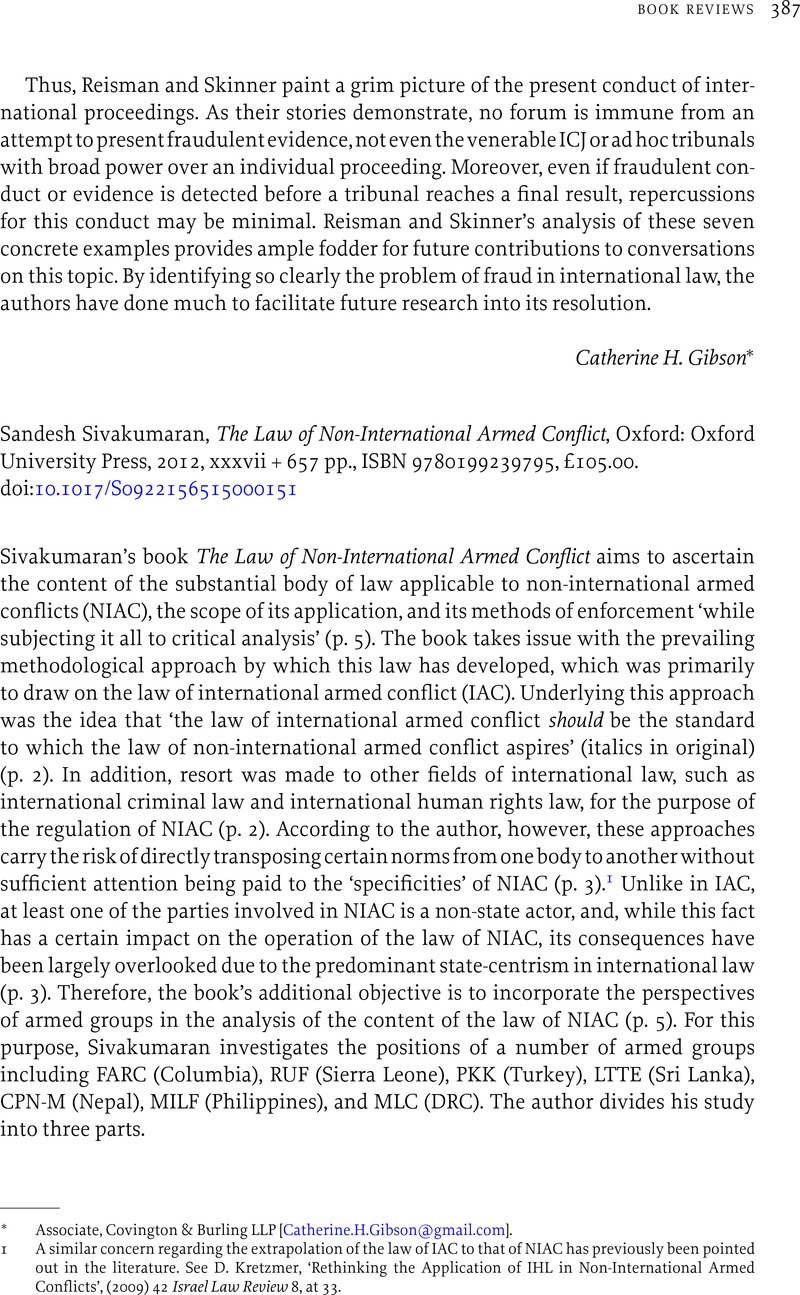No CrossRef data available.
Published online by Cambridge University Press: 24 April 2015

1 A similar concern regarding the extrapolation of the law of IAC to that of NIAC has previously been pointed out in the literature. See Kretzmer, D., ‘Rethinking the Application of IHL in Non-International Armed Conflicts’, (2009) 42 Israel Law Review 8, at 33CrossRefGoogle Scholar.
2 In contrast, it seems that the notion of territorial control in AP II has been restrictively interpreted in the literature. See L. Moir, The Law of Internal Armed Conflict (2002), 105–7.
3 In recent years there has been much active debate on the classification of extraterritorial operations against non-state actors. While it is true that the majority of the literature classifies such an operation as ‘extraterritorial’ NIAC, it is likely that the application of AP II is not compatible with the language of Art. 1(1) of AP II. See N. Melzer, Targeted Killing in International Law (2008), 257; N. Lubell, Extraterritorial Use of Force against Non-State Actors (2010), 100.
4 On the other hand, this position contrasts with the ICTY jurisprudence. For details, see A. Cullen, The Concept of Non-International Armed Conflict in International Humanitarian Law (2010), 140–142.
5 The author developed this idea in another of his articles, and presents the theory of ‘Quasi-Custom’, which is ‘based on the practices and views of states plus actors other than states, including . . . armed groups’. See Roberts, A. and Sivakumaran, S., ‘Lawmaking by Nonstate Actors: Engaging Armed Groups in the Creation of International Humanitarian Law,’ (2012) 37 Yale Journal of International Law 107, 149–51Google Scholar. However, it is not clear whether this theory mitigates concerns about the role of the state in the creation of customary international law.
6 In relation to this issue, the Serdar Mohammed case clarifies that international humanitarian law does not provide a legal basis for detention in NIAC. See Serdar Mohammed v. Ministry of Justice [2014] EWHC 1369 (QB), at 239–51.
7 In this sense, the author advances the ICRC's membership approach to include individuals who do not perform ‘continuous combat functions’ as members to be targeted.
8 See Scobbie, I., ‘The approach to customary international law in the Study’, in Wilmshurst, E. and Breau, S. (eds.), Perspectives on the ICRC Study on Customary International Humanitarian Law (2007) 15, 36–47Google Scholar.
9 See Kingsbury, B., ‘The Concept of Compliance as a Function of Competing Conceptions of International Law’, (1998) 19 Michigan Journal of International Law 345, 345–68Google Scholar.
10 See Cassese, A., ‘Introduction’, in Cassese, A. (ed.), Realizing Utopia: The Future of International Law (2012) xvii, xxiCrossRefGoogle Scholar.